The Whale shark (Rhincodon Typus) is the largest fish in the world, growing up to 12m (40 feet) in length. Though massive in size, whale sharks are completely harmless and feed on plankton and small fish which are filtered from the water as they cruise the world's oceans. Despite their size, whale sharks are remarkably gentle and curious. They have a slow growth rate, only reaching maturity at around 30 years old and living as long as 60 – 100 years. Their reproduction rate is also very slow – long intervals between pregnancies and producing around a few hundred pups at one time.
Whale Sharks are located near the Equator around coast lines and open seas. They swim mostly along the top of the surface. Whale sharks can be found in the following areas:
- Western Atlantic: New York to central Brazil and including Gulf of Mexico and Caribbean.
- Eastern Atlantic: Senegal, Mauritania, Cape Verde Islands, Gulf of Guinea.
- Indo-West and Central Pacific: South Africa and Red Sea to Pakistan, India, Sri Lanka, Malaysia, Thailand, China, Japan, Philippines, Indonesia (Kalimantan, Java, Irian Jaya), Papua New Guinea, Australia (Queensland, Northern Territory), New Caledonia, Hawaiian Islands.
- Eastern Pacific: Southern California to northern Chile.
- Indian Ocean: the Seychelles, Mauritius, Zanzibar, Madagascar, Mozambique and northernmost Natal.
Unfortunately, in some countries such as India and the Philippines, the whale shark is often hunted for meat which is sold to feed the rich in SE Asia, where whale shark meat is an expensive delicacy. Numbers have certainly been reduced, but with the migratory habits of the sharks, it is very difficult to track and count them.
February to May: The time of year to see a whale shark in Thailand is between February and May.
April to June: Whale shark sightings are extremely common on the Ningaloo Reef in the months of mid April-June. A spotter plane communicates with boats as it spots the large shadow of a whale shark near the surface. Interactions are regulated by CALM (Conservation and Land Management), which limits the number of snorkellers in the water with a shark to a maximum of 10 and does not allow the use of flash photography. There are also strictly regulated guidelines including the distance a snorkeller should stay from the animal and how long a single interaction with a whale shark may last. These measures are mainly to reduce stress to the sharks, another unknown factor for scientists, even though people have been interacting with whale sharks on the Ningaloo for many years.
April to June: southern Belize offers whale shark spotting opportunities. The best time to do so during these months are three days before the full moon to three days after the last quarter moon. It's during these times that the Cubera Snappers spawn, attracting the Whale Sharks.
July to September: Rarely seen in shallow coastal waters, whale sharks have been regular visitors to the Sea of Cortez near Bahia de Los Angeles, Baja California, Mexico are closest to the US and are a good place to encounter whale sharks at this time of year.
November to April: whale sharks can be seen around Richelieu Rock in the North Andaman Sea.
If you have had a whale shark encounter, the Beetle would love to hear from you!


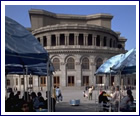 The majestic peaks of Mount Ararat provide a stunning
backdrop to Yerevan. The monastery of Khor-Virab and the ruins of
the ancient city of Dvin (dating back to the second century BC) are
located in the mid-distance Aerial view of Yerevan, capital of
Armenia Statue of Komitas, one of Armenia's most loved
composers, outside the Komitas Conservatory. Apart from writing
many original composition, Komitas travelled the country noting
down folk songs for posterity Yerevan, which is nestled in the
shadow of the snow-capped heights of the majestic mount Ararat,
where the Biblical Noah's Ark first landed escaping the Great
Flood, is the capital city of Armenia. With a population numbering
over 1.2 million, Yerevan is a bustling city. The central plaza,
Republic Square, is designed in the Armenian national style and
houses the Government House, the Cabinet and other governmental
offices as well as the Erebuni and Armenia hotels.
The majestic peaks of Mount Ararat provide a stunning
backdrop to Yerevan. The monastery of Khor-Virab and the ruins of
the ancient city of Dvin (dating back to the second century BC) are
located in the mid-distance Aerial view of Yerevan, capital of
Armenia Statue of Komitas, one of Armenia's most loved
composers, outside the Komitas Conservatory. Apart from writing
many original composition, Komitas travelled the country noting
down folk songs for posterity Yerevan, which is nestled in the
shadow of the snow-capped heights of the majestic mount Ararat,
where the Biblical Noah's Ark first landed escaping the Great
Flood, is the capital city of Armenia. With a population numbering
over 1.2 million, Yerevan is a bustling city. The central plaza,
Republic Square, is designed in the Armenian national style and
houses the Government House, the Cabinet and other governmental
offices as well as the Erebuni and Armenia hotels.
 Yerevan, the ancient capital of Armenia, extends you a
warm and friendly welcome. It is one of the oldest cities in the
world. The earliest recorded settlement there dates back to 782 BC.
King Argishty I founded a fortress city in the north-eastern part
of present-day Yerevan, with the following cuneiform inscription,
“With the majesty of God Khald, Argishty, son of Menua, built
up this inaccessible castle and named it Erebuni…” You can
still see relics from this part of our history at the Erebuni
Museum in Yerevan.
Yerevan, the ancient capital of Armenia, extends you a
warm and friendly welcome. It is one of the oldest cities in the
world. The earliest recorded settlement there dates back to 782 BC.
King Argishty I founded a fortress city in the north-eastern part
of present-day Yerevan, with the following cuneiform inscription,
“With the majesty of God Khald, Argishty, son of Menua, built
up this inaccessible castle and named it Erebuni…” You can
still see relics from this part of our history at the Erebuni
Museum in Yerevan.
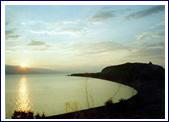 As you explore the many interesting sights in Yerevan, you will
learn about the culture and history of one of the world's
oldest nations.
As you explore the many interesting sights in Yerevan, you will
learn about the culture and history of one of the world's
oldest nations.
 Becky introduces me to my host, Mr Sijaona. He is a
small wiry man with a purposeful stride. He welcomes me into his
house. I gaze around at the crumbling walls and the total lack of
comfort. But then he says in halting English that his other house
is better, (two wives, therefore two houses) – so I pick up my
suitcase and follow him down the dusty street.
Becky introduces me to my host, Mr Sijaona. He is a
small wiry man with a purposeful stride. He welcomes me into his
house. I gaze around at the crumbling walls and the total lack of
comfort. But then he says in halting English that his other house
is better, (two wives, therefore two houses) – so I pick up my
suitcase and follow him down the dusty street.
 We are sorry to say that Mac is not very well, but he is still
e-mailing strong and recently sent the Beetle a collection of
travel reminiscences about Australia, camels which takes us to
India and then back to Australia.
We are sorry to say that Mac is not very well, but he is still
e-mailing strong and recently sent the Beetle a collection of
travel reminiscences about Australia, camels which takes us to
India and then back to Australia.

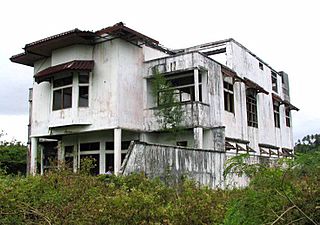 The killing is over on Ambon, the hub of the Moluccas, or Spice
Islands, in Indonesia. There is an invisible line drawn between the
Christian and Muslim sectors in the City – it is still dangerous to
stop on the wrong side. The burnt out churches, houses and even
university buildings are reminders of the carnage that occurred a
short while ago, when Ambon was likened to Beirut at its worst.
“So it was a religious war?” I enquire. “Not really,
more the result of political manoeuvrings. Now we have peace and
democracy, but no jobs, clean streets or reliable infrastructure,
the opposite of neighbouring Singapore.” Almost incredibly,
fair and trouble-free elections had just been completed, much to
the surprise of the incumbent president, who refused to accept
defeat. “I would rather be in the hands of the Chinese army
than the Indonesian”, a French photo-journalist told us later,
after describing how he had to injure himself to persuade the
Chinese soldiers to release him. “You won't be killed or
“disappear” in their custody.”
The killing is over on Ambon, the hub of the Moluccas, or Spice
Islands, in Indonesia. There is an invisible line drawn between the
Christian and Muslim sectors in the City – it is still dangerous to
stop on the wrong side. The burnt out churches, houses and even
university buildings are reminders of the carnage that occurred a
short while ago, when Ambon was likened to Beirut at its worst.
“So it was a religious war?” I enquire. “Not really,
more the result of political manoeuvrings. Now we have peace and
democracy, but no jobs, clean streets or reliable infrastructure,
the opposite of neighbouring Singapore.” Almost incredibly,
fair and trouble-free elections had just been completed, much to
the surprise of the incumbent president, who refused to accept
defeat. “I would rather be in the hands of the Chinese army
than the Indonesian”, a French photo-journalist told us later,
after describing how he had to injure himself to persuade the
Chinese soldiers to release him. “You won't be killed or
“disappear” in their custody.”
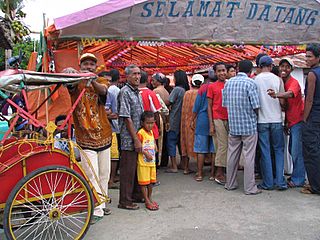 With two friends I drove across the spine of Ambon to Hila, an old
village overlooking the much larger island of Ceram, passing
countless cloves and nutmegs drying in the sun on the roadside. It
was hard to believe that centuries ago such spices were valued more
highly than gold, with the result that the islands were a
battle-ground for the colonial powers, ending when we swapped our
land there for New York, after smuggling out seedlings to establish
plantations in India! We hiked up a steep trail, through spice
plantations, to a ridge with a spectacular view over the partially
forested hillsides. Here we strove to observe two species of
parrots endemic to these islands, which we could hear but not see.
We returned early the following morning and were rewarded by the
sight of the electric Moluccan Red Lory and the “poorly
known”, to quote the bird book, but well-named Drab
Honeyeater. On the drive back to the airport, we stopped to chat
and photo the friendly locals, many of whom were Muslims.
With two friends I drove across the spine of Ambon to Hila, an old
village overlooking the much larger island of Ceram, passing
countless cloves and nutmegs drying in the sun on the roadside. It
was hard to believe that centuries ago such spices were valued more
highly than gold, with the result that the islands were a
battle-ground for the colonial powers, ending when we swapped our
land there for New York, after smuggling out seedlings to establish
plantations in India! We hiked up a steep trail, through spice
plantations, to a ridge with a spectacular view over the partially
forested hillsides. Here we strove to observe two species of
parrots endemic to these islands, which we could hear but not see.
We returned early the following morning and were rewarded by the
sight of the electric Moluccan Red Lory and the “poorly
known”, to quote the bird book, but well-named Drab
Honeyeater. On the drive back to the airport, we stopped to chat
and photo the friendly locals, many of whom were Muslims.
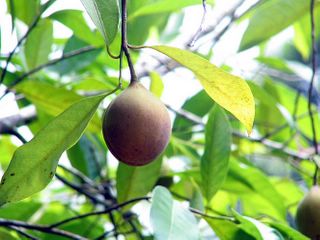 The main reason for going to Ambon was to take a flight to the
rarely visited Tanimbar Islands, some two hours east of Ambon. The
only flights were with Merpati, whose slogan “Get the
feeling” aptly described schedules in these parts as feelings
were all you could rely on, with nobody outside their office in
Ambon knowing when such flights would occur. Fortunately, we were
able to fly to Saumlaki on Yamdena, the main island of the
Tanimbars, on the desired day, a most uncomfortable experience in
an ancient 22-seater. We then discovered that we could not fly to
the relatively close Kai Islands as we wanted, flights having been
suspended, and the flight we had “booked” back to Ambon
did not run that day. As the previous day was full, we got a
booking for the day after, but no tickets as the agent had gone to
the airport to investigate why the plane had returned. The answer
was that the pilot had felt ill and so decided to come back to
Saumlaki, apparently not trusting his co-pilot to take-over.
The main reason for going to Ambon was to take a flight to the
rarely visited Tanimbar Islands, some two hours east of Ambon. The
only flights were with Merpati, whose slogan “Get the
feeling” aptly described schedules in these parts as feelings
were all you could rely on, with nobody outside their office in
Ambon knowing when such flights would occur. Fortunately, we were
able to fly to Saumlaki on Yamdena, the main island of the
Tanimbars, on the desired day, a most uncomfortable experience in
an ancient 22-seater. We then discovered that we could not fly to
the relatively close Kai Islands as we wanted, flights having been
suspended, and the flight we had “booked” back to Ambon
did not run that day. As the previous day was full, we got a
booking for the day after, but no tickets as the agent had gone to
the airport to investigate why the plane had returned. The answer
was that the pilot had felt ill and so decided to come back to
Saumlaki, apparently not trusting his co-pilot to take-over.
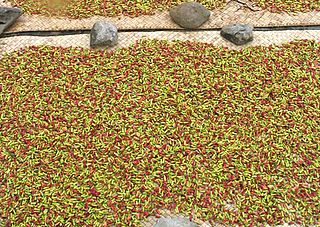 The Tanimbars are at almost the south-eastern extremity of the 5000
km long Indonesian Archipelago, only 150 km from the coast of
Australia. Unlike most of the country, the population is
predominantly Christian. At the Harapan Indah, the only hotel in
town, we arranged to stay at the owners' farm 21 km along the
island's only road, so that we had ready access to the native
forest. By the time we reached the farm, after supplies had been
purchased, including a crate of beer, it was raining – the first
time for 4 months so it was said. We had come here to try to see
the 20 or more special birds endemic to these parts, a surprisingly
high number for such a relatively small area. When the rain
stopped, we set forth, amongst much bird activity, but were
disappointed to find the extensive forest reported to be present by
the last person we knew to have visited, some 10 years ago, had
gone and only patches of logged forest remained.
The Tanimbars are at almost the south-eastern extremity of the 5000
km long Indonesian Archipelago, only 150 km from the coast of
Australia. Unlike most of the country, the population is
predominantly Christian. At the Harapan Indah, the only hotel in
town, we arranged to stay at the owners' farm 21 km along the
island's only road, so that we had ready access to the native
forest. By the time we reached the farm, after supplies had been
purchased, including a crate of beer, it was raining – the first
time for 4 months so it was said. We had come here to try to see
the 20 or more special birds endemic to these parts, a surprisingly
high number for such a relatively small area. When the rain
stopped, we set forth, amongst much bird activity, but were
disappointed to find the extensive forest reported to be present by
the last person we knew to have visited, some 10 years ago, had
gone and only patches of logged forest remained. 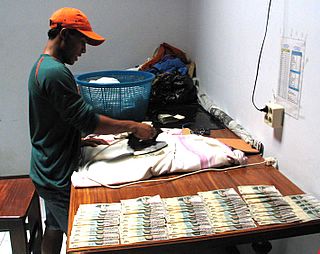 However, over the
next 4 days we saw all the specialities, including 2 parrots, 2
thrushes and 5 flycatchers, apart from the Tanimbar Scrubfowl,
sadly scarce or elusive due to hunting, and the Pied Bronze Cuckoo.
Strangely, I had recorded the song of the cuckoo on the first
afternoon, but never heard it again. According to the book, it
parasitizes the endemic Rufous sided Gerygone, but the only bird to
react to the playback of its song, on several occasions, was the
Wallacean Whistler – indicating that this species is the main host
for the cuckoo's eggs.
However, over the
next 4 days we saw all the specialities, including 2 parrots, 2
thrushes and 5 flycatchers, apart from the Tanimbar Scrubfowl,
sadly scarce or elusive due to hunting, and the Pied Bronze Cuckoo.
Strangely, I had recorded the song of the cuckoo on the first
afternoon, but never heard it again. According to the book, it
parasitizes the endemic Rufous sided Gerygone, but the only bird to
react to the playback of its song, on several occasions, was the
Wallacean Whistler – indicating that this species is the main host
for the cuckoo's eggs.
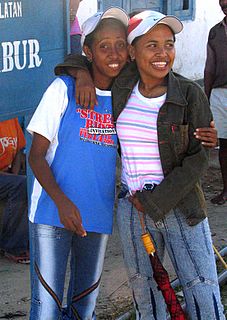 On the last afternoon, we visited the old village of Turgham. We
started at the mayor's house, where a meeting of the village
elders was in progress. After mutual greetings, we signed the
visitors book, noting that all previous visitors of the last 2-3
years looked to be either Indonesians or Australians, the latter
associated with the annual Darwin to Saumlaki boat race apparently.
At a wood-carver's house we bought a number of carvings from
the selection on offer by several local artists – good quality and
value. We were invited to drink a glass of Soli, local spirit
distilled from palm wine- highly alcoholic and surprisingly smooth.
Returning to the Harapan Indah in Saumlaki, we enjoyed the
air-conditioning, until ended by a power cut, and were amused to
observe the staff ironing banknotes flat, perhaps to facilitate
storage as even the smallest item can require a large number of
notes, the exchange rate being 16, 000 Rupiah to the pound. The
trappings of civilisation are a bit thin on the ground here: no
mobile phone cover, internet access or shopping malls. Predictably,
our flight was delayed by late arrival of the plane but this gave
us chance to study the profusion of Oriental Plovers and Little
Curlews on the runway – two species rarely encountered away from
their wintering grounds in northern Australia. It was a shame we
could not fly to Kai but we all agreed this last minute extension
to our eastern Indonesia trip had been a highly rewarding and
pleasant experience.
On the last afternoon, we visited the old village of Turgham. We
started at the mayor's house, where a meeting of the village
elders was in progress. After mutual greetings, we signed the
visitors book, noting that all previous visitors of the last 2-3
years looked to be either Indonesians or Australians, the latter
associated with the annual Darwin to Saumlaki boat race apparently.
At a wood-carver's house we bought a number of carvings from
the selection on offer by several local artists – good quality and
value. We were invited to drink a glass of Soli, local spirit
distilled from palm wine- highly alcoholic and surprisingly smooth.
Returning to the Harapan Indah in Saumlaki, we enjoyed the
air-conditioning, until ended by a power cut, and were amused to
observe the staff ironing banknotes flat, perhaps to facilitate
storage as even the smallest item can require a large number of
notes, the exchange rate being 16, 000 Rupiah to the pound. The
trappings of civilisation are a bit thin on the ground here: no
mobile phone cover, internet access or shopping malls. Predictably,
our flight was delayed by late arrival of the plane but this gave
us chance to study the profusion of Oriental Plovers and Little
Curlews on the runway – two species rarely encountered away from
their wintering grounds in northern Australia. It was a shame we
could not fly to Kai but we all agreed this last minute extension
to our eastern Indonesia trip had been a highly rewarding and
pleasant experience.

